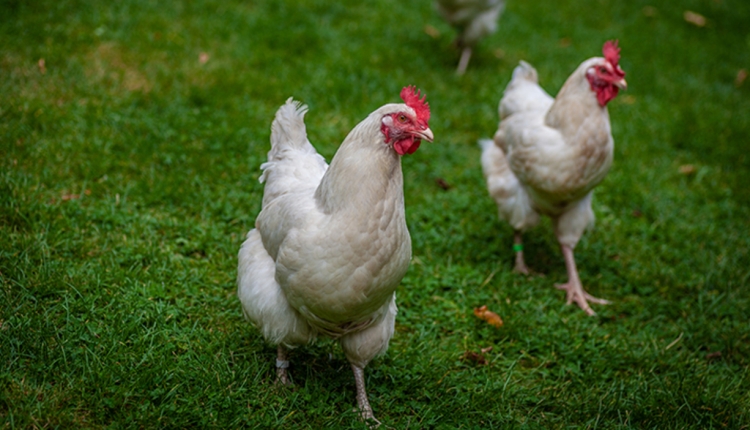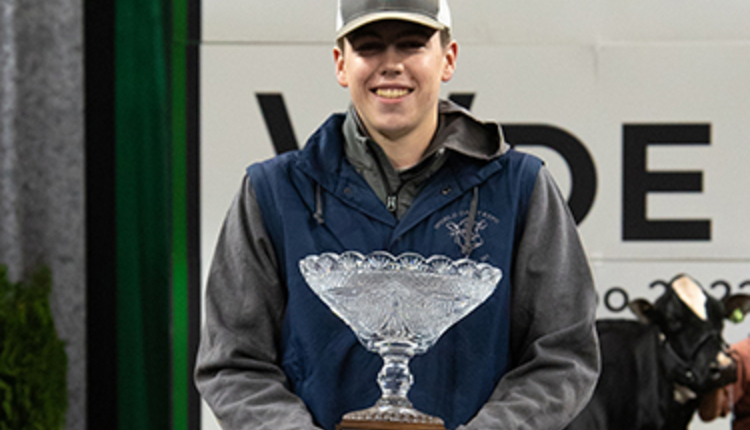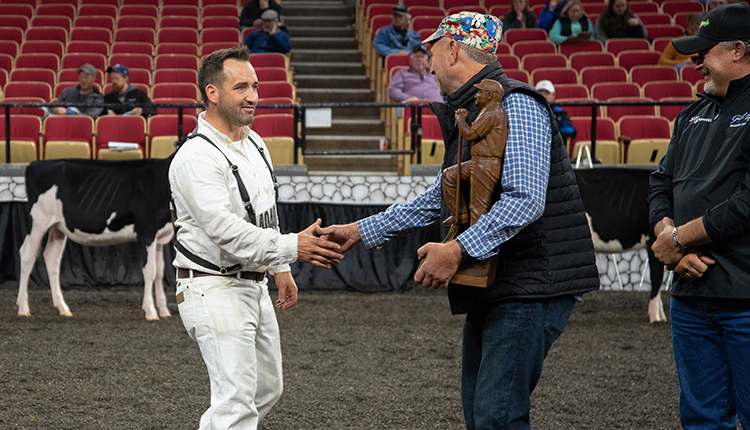
"I am not prepared to accept the fact that feet and leg heritabilities are as low as they currently appear. We need to evaluate the trait better," Gordon Atkins, D.V.M., told those attending the 122nd annual meeting of the Wisconsin Holstein Association in Wausau, Wis. "When looking at lameness, 88 percent is a rear foot situation," he explained; "only 12 percent is related to the leg. Of the 88 percent of lameness attributed to rear feet, the outside claw takes the brunt of the lameness issue," he said. "That causes the outside claw to grow faster because it is growing tissue in response to the greater pressure it endures while walking," Atkins went on to explain.
When cows become lame, often the fatty pad (digital cushion) within the base of the heel structure becomes compromised. "The incidence of lameness in thin cows is higher because thin cows mobilize fat. This includes the fat that's mobilized within the foot's pad," said the Alberta veterinarian. "As this takes place, the foot and heel structure has less protection. The foot's fatty pad can be replaced as the cow regains her body condition, but that process diminishes over time and with growing age. It eventually is replaced with scar tissue," said the 1992 president of the American Association of Bovine Practitioners.
While there are a number of ways to potentially improve this situation, foot angle doesn't appear to be the most ideal. "Foot angle is not a good trait to measure because it is so variable due to foot trimming," he noted. "Can we find a way to more accurately identify heel depth? It would be less variable than foot angle," stated Atkins.
Meanwhile, among the feet and leg traits, rear leg side view has the greatest heritability of any of the leg traits. "That is probably because we accurately measure it," he said.
Udders are a completely different paradigm. "We have very good consistency in evaluating udders around the world," said the Holstein Canada Type Classification Advisory committee member. He went on to note that this accuracy and well-documented economic benefits are reasons that the mammary system accounts for 50 to 55 percent of the type traits in the LPI (Lifetime Profit Index) and TPI (Total Performance Index).
Even though udders have improved dramatically, there are still some areas of concern. "In selecting for a strong median suspensory ligament, we have inadvertently selected for close rear teats," said Atkins as he showed photos and videos detailing the situation. "We can continue to breed for a strong suspensory ligament, but we must make stronger selection for rear teat placement," he said, explaining this is especially an issue with robotic milking systems. "However, we must be very careful as we measure and select for rear teat placement that we don't give up the median suspensory ligament because that ligament is responsible for carrying a major portion of the weight of the udder," said the veterinarian who developed the Functional Conformation DVD that explains the issue in more detail. To obtain a copy of the DVD go to: https://www.holstein.ca/Lite/Aspx/ProductsInformationServicesVideosAvailableLite.aspx
One other area of concern is teat length. "Teat length is highly heritable and teats have become much shorter over the years. An excessively short teat is likely not desirable as it may be subjected to more trauma during milking," said the veterinarian.
As for the rump, Atkins believes it is underscored. "Think about the rump. It is the foundation for the udder, the rear feet and legs, and the reproductive tract. It does deserve more credit. But finding more points in the scorecard is a challenge," he admitted.
Stature is a hotly debated topic these days. Are big cows a stall or cow issue?
"We can have an efficient 62- or 63-inch cow. But what are the economics?" he asked. "Ten to 15 years ago, we had cows that were too tall in the front end. We learned those cows weren't very efficient," he said.
"As we evolve our thinking on this topic, we don't want to give up capacity. However, ultra tall cows don't last, especially in free stalls. We can have cows with moderate stature, but we can't give up capacity," he cautioned.
A great deal of progress has been made, but more can be done. "Classification systems have been retooled to better predict longevity and enhance genomic predictions," said Atkins. "However, cows don't maximize milk production until the fourth lactation. There isn't a country in the world hitting that average, so we all have more work to do."








